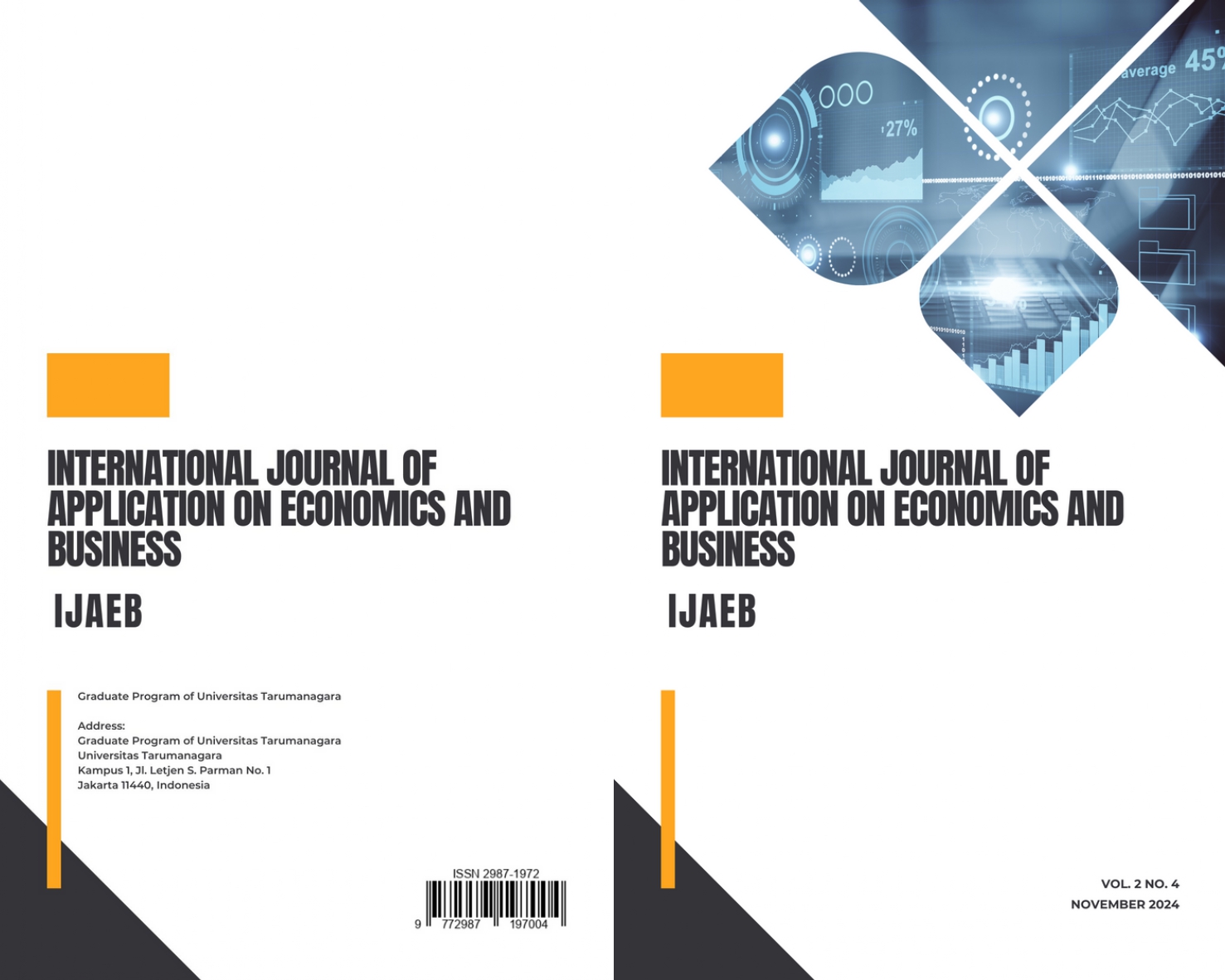FACTORS INFLUENCING THE PERFORMANCE OF KEY ACCOUNT MANAGERS IN THE INDONESIAN BANKING INDUSTRY
Main Article Content
Abstract
The banking business stands as a service-oriented enterprise rooted in the principle of trust, where the banking sector heavily relies on service delivery to manage customer trust, thereby ensuring that clients continue to entrust their funds and financial matters to a bank. Within the realm of banking, Key Account Management (KAM) plays a crucial role in maintaining the trust of clients, particularly those classified as Key Accounts (KA). Given the broad spectrum of banking services such as funds deposit and disbursement and considering that bank clients may range from individuals (B2C) to corporations (B2B), banking services must be always delivered at an optimal level. KAM serves as a frontline entity in managing relationships with clients, especially KAs, who are vital for the success of the banking business. This study aims to identify the factors influencing the performance of KAM in the banking sector, for which an in-depth interview was conducted with three Key Account Managers (KA Managers) in the banking industry in Indonesia. The findings reveal both intrinsic and extrinsic factors impacting the performance of KA Managers, with Trust and Solution, as well as Personal attributes, being identified as the primary factors.
Article Details

This work is licensed under a Creative Commons Attribution-NonCommercial-ShareAlike 4.0 International License.
This journal provides immediate open access to its content on the principle that making research freely available to the public supports a greater global exchange of knowledge.
IJAEB by Graduate Program of Universitas Tarumanagara is licensed under a Creative Commons Attribution-NonCommercial-ShareAlike 4.0 International License.. Permissions beyond the scope of this license may be available at https://journal.untar.ac.id/index.php/ijaeb
References
A Strauss, J Corbin. (1990). Basics of Qualitative Research.
Abratt, R., & Kelly, P. M. (2002). Customer–supplier partnerships: Perceptions of a successful key account management program. Industrial Marketing Management, 31(5), 467-476.
Davies, I. A., & Ryals, L. J. (2013). Attitudes and behaviours of key account managers: Are they really any different to senior sales professionals?. Industrial Marketing Management, 42(6), 919-931.
Davies, I.A., & Ryals, L.J. (2013). The role of Key Account Management in the adaptive business network. Journal of Business & Industrial Marketing, 28(6), 460-473.
Davies, I.A., & Ryals, L.J. (2014). The effectiveness of Key Account Management practices. Industrial Marketing Management, 43(7), 1182-1194.
Gioia, D. A., Corley, K. G., & Hamilton, A. L. (2013). Seeking qualitative rigor in inductive research. Organizational Research Methods, 16(1), 15–31. https://doi.org/10.5072/genderopen-develop-7
Glaser, B., & Strauss, A. (2017). Discovery of grounded theory: Strategies for qualitative research. Routledge.
Guesalaga, R. (2014). Top management involvement with key accounts: The concept, its dimensions, and strategic outcomes. Industrial Marketing Management, 43(7), 1146–1156.
Homburg, C., Workman Jr, J. P., & Jensen, O. (2002). A configurational perspective on key account management. Journal of marketing
Hughes, T., Foss, B., Stone, M., & Cheverton, P. (2004). Key account management in financial services: An outline research agenda. Journal of Financial Services Marketing
Istijanto. (2022). Exploring factors impacting students’ motivation to learn using face-to-face, online and hybrid learning. Emerald Publishing.
Ivens, B. S., & Pardo, C. (2007). Are key account relationships different? Empirical results on supplier strategies and customer reactions. Industrial Marketing Management, 36(4), 470–482.
Kierstead, J. (1998). Personality and Job Performance: A Research Overview. Policy, Research and Communications Branch Public Service Commission of Canada.
Lai Man So, S., & Speece, M. W. (2000). Perceptions of relationship marketing among account managers of commercial banks in a Chinese environment. International Journal of Bank Marketing, 18(7), 315-327.
Marcos-Cuevas, J., Nätti, S., Palo, T., & Baumann, J. (2014). Value co-creation practices and capabilities: Sustained purposeful engagement across B2B systems. Industrial Marketing Management, 43(3), 511-528.
Marcos-Cuevas, J., Nätti, S., Palo, T., & Ryals, L. J. (2014). Implementing key account management: Intraorganizational practices and associated dilemmas. Industrial Marketing Management, 43(7), 1216-1224.
McDonald, M., Millman, T., & Rogers, B. (1997). Key account management: Theory, practice and challenges. Journal of Marketing Management, 13(8), 737–757.
Murphy, L. E., & Coughlan, J. P. (2018). Does it pay to be proactive? Testing proactiveness and the joint effect of internal and external collaboration on key account manager performance. Journal of Personal Selling & Sales Management, 38(2), 205–219.
Napolitano, L. (1997). Customer-supplier partnering: A strategy whose time has come. Journal of Personal Selling & Sales Management, 17(4), 1–8.
Ojasalo, J. (2001). Key account management at company and individual levels in business-to-business relationships. Journal of Business & Industrial Marketing, 16(3), 199-218.
Ojasalo, J. (2001). Managing customer expectations in professional services. Managing service quality: An international Journal, 11(3), 200-212.
Pardo, C. (1997). Key account management in the business to business field: The key account’s point of view. Journal of Personal Selling & Sales Management, 17(4), 17–26.
Pardo, C., Ivens, B. S., & Wilson, K. (2014). Differentiation and alignment in KAM implementation. Industrial Marketing Management, 43(7), 1136–1145.
Peters, L., Ivens, B. S., & Pardo, C. (2020). Identification as a challenge in key account management: Conceptual foundations and a qualitative study. Industrial marketing management, 90, 300-313.
Pressey, A. D., Gilchrist, A. J., & Lenney, P. (2014). Sales and marketing resistance to Key Account Management implementation: An ethnographic investigation. Industrial Marketing Management, 43(7), 1157-1171.
Pressey, A.D., Winklhofer, H., & Tzokas, N. (2014). A cultural analysis of the role of buyer-seller relationships in the development of market-based assets. Industrial Marketing Management, 43(3), 494-506
Ryan, R. M., & Deci, E. L. (2000). Self-determination theory and the facilitation of intrinsic motivation, social development, and well-being. American Psychologist, 55(1), 68–78. https://doi.org/10.1037/0003-066x.55.1.68
Storbacka, K. (2012). Strategic account management programs: Alignment of design elements and management practices. Journal of Business & Industrial Marketing., 29 (4), 259–274.
Wilson, K., & Millman, T. (2003). The global account manager is as political entrepreneur. Industrial Marketing Management, 32(2), 151–158.
Yow, W. Q., & Lim, T. Z. (2019). Sharing the same languages helps us work Better together. Palgrave Communications, 5(1). https://doi.org/10.1057/s41599-019-0365-z



